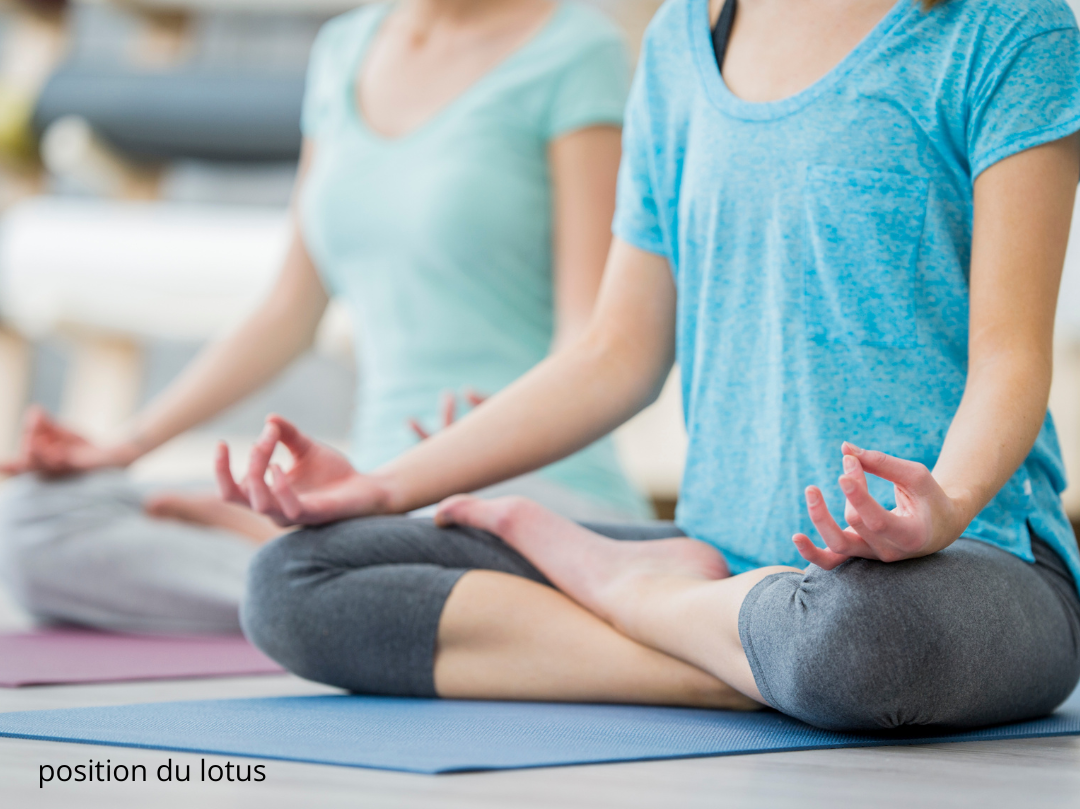The Lotus Position in Yoga (Padmasana): Benefits, Origins and Practical Guide

The lotus position, or Padmasana in Sanskrit, is one of the most iconic and respected postures in the practice of yoga . A symbol of purity and spiritual elevation, this posture is often associated with meditation and inner quest.
In this article, we'll explore this pose in depth, from its origins and meanings to its benefits and practical methods for incorporating it into your yoga routine .
Origin and meaning
The lotus position has its roots in the ancient traditions of yoga and Buddhism. Used for millennia, it symbolizes the flowering of the human spirit and the blossoming of consciousness. The lotus, a flower that grows from the mud to emerge pristine on the surface, represents the potential for transformation and inner purity .
Benefits of the lotus position
Physical benefits
Practicing the lotus position regularly helps improve hip and knee flexibility, strengthens the ankles and legs, and promotes better posture. This pose also helps stretch the back muscles, thereby reducing back pain. Overall, the physical benefits are as follows!
-
The deep abdominal muscles are strengthened
-
The hips become more flexible
-
Tones the entire groin area
-
Joints are strengthened in the knees and ankles
-
Better abdominal breathing
Mental benefits
In addition to its physical benefits, the lotus position is known to induce a state of calm and deep concentration. By stabilizing the body, it helps stabilize the mind, facilitating meditation and mental clarity.
Energy benefits
Energetically, Padmasana is known to open the chakras, particularly the root chakra ( Muladhara ) and the crown chakra ( Sahasrara ). This opening allows for better circulation of vital energy (prana) in the body.
Discover our t-shirts and sweatshirts
Preparations for the lotus position
Preliminary stretches and exercises
Before attempting the lotus position, it's essential to prepare your body with targeted stretches. Focus on opening your hips with poses like the butterfly pose (Baddha Konasana) and the pigeon stretch ( Eka Pada Rajakapotasana ). Working on knee flexibility with gentle exercises is also crucial.
Recommended warm-ups
Begin with light warm-ups to increase circulation and relax muscles. Sun salutations (Surya Namaskar) are ideal for preparing the entire body for practice.
Alternative poses for beginners
If you are a beginner, it may be helpful to start with more accessible variations of the lotus position, such as the half lotus (Ardha Padmasana) or the simple pose (Sukhasana).
Practical Guide to Performing the Lotus Position
Detailed steps to enter the posture
- Sit on your mat with your legs extended in front of you.
- Bend your right knee and place your right foot on your left thigh, as high as possible.
- Bend your left knee and place your left foot on your right thigh.
- Make sure both knees touch the floor and your spine is straight.
Tips for maintaining balance and stability
Keep your hands on your knees in Jnana Mudra (gesture of knowledge) or Anjali Mudra (gesture of prayer, we talk about it in this article => Namaste ) to stabilize the posture. Concentrate on your breathing to maintain balance and harmony between body and mind.
Adjustments and corrections to avoid common mistakes
Avoid straining your knees if you feel pain. Use meditation cushions to elevate your hips if necessary. Make sure your weight is evenly distributed on your sit bones (the buttock bones) and not on your spine.
Precautions and Contraindications
The lotus position requires great flexibility in the hips and knees. If you have any knee, ankle, or hip injuries, it's best to consult a professional before attempting this pose. Always listen to your body and never force a pose.
Integrate Lotus into your daily practice
Combinations with other yoga postures
Padmasana can be incorporated into a yoga sequence that includes hip-opening poses and back stretches. For example, after poses like pigeon pose or child's pose, lotus can bring a moment of calm and centering.
Practice hip-opening poses regularly and be patient with your body. Use props like blocks and cushions to support your practice and help you progress safely.
The lotus position is a powerful and symbolic posture that offers numerous physical, mental, and energetic benefits. By incorporating this pose into your yoga practice, you can develop greater flexibility, improved focus, and inner harmony.
Remember to practice regularly and listen to your body to progress safely.



















